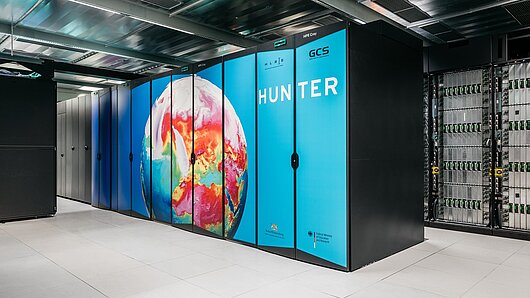High-Performance Computing Center Stuttgart

Based on the HPE Cray EX4000 platform from Hewlett Packard Enterprise, Hunter was inaugurated and went into service in early 2025. Its theoretical peak performance of 48.1 Petaflops is enabled by AMD Instinct MI300A accelerated processing units. It also uses 100% fanless direct liquid cooling system architecture developed at HPE and is implementing a dynamic power capping method to maximize its energy performance. At nearly double the speed of its predecessor, Hawk, Hunter uses 80% less energy at peak performance.
Sustainability and energy efficiency have long been central components of HLRS’s strategy. It remains the only HPC center of its size to be certified by the Eco-Management and Audit Scheme, the world’s most demanding standard for environmental performance. Planning for Herder and a new building called HLRS III are also being done with sustainability in mind, including building new infrastructure to reuse heat generated by Herder in buildings on the University of Stuttgart campus.
— Christopher Williams
Funding for Hunter is provided by the Baden-Württemberg Ministry for Science, Research, and the Arts and the German Federal Ministry of Research, Technology and Space through the Gauss Centre for Supercomputing (GCS).